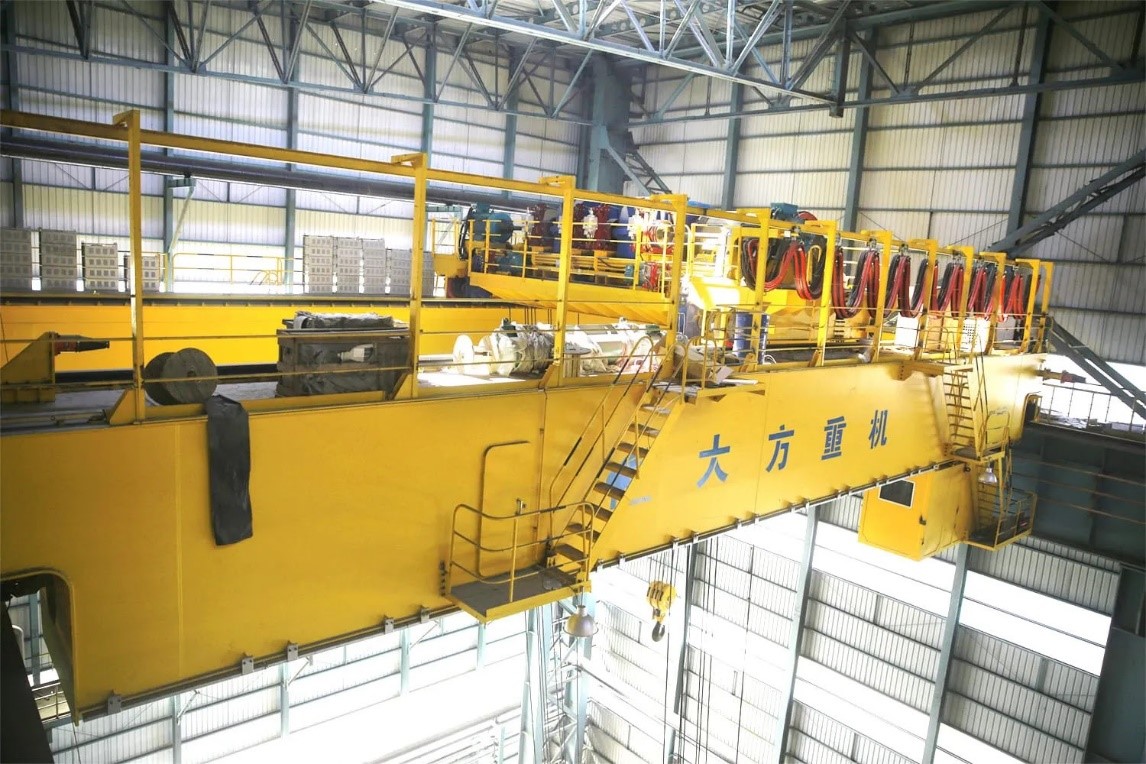Innovations In Material Handling: Exploring Smart Technologies In Bridge Cranes
5 Mins Read
Published on: 17 August 2023
Last Updated on: 06 September 2024

toc impalement
In the world of industrial operations, where efficiency and precision are paramount, the evolution of technology has ushered in a new era of innovation.
One of the most notable transformations can be witnessed in the domain of material handling, specifically with the advent of smart technologies in bridge cranes. These towering machines, once solely reliant on manual labor, have now embraced automation and remote control, reshaping the landscape of material handling.
The Benefits Of Automated Overhead Cranes
Since integrating the bridge cranes with automation, the output of these machines has increased manifold without question. The automatic handling systems are highly developed, and they provide better control of the user with betterInnovations In Material Handling: Exploring Smart Technologies In Bridge Cranes control. They can control the interlogistics system within one single program.
Automated systems can minimize the workers’ risks and increase efficiency. Along with safety, they have easily gained competitive advantages against generalized cranes.
Slashing Costs
The Automatic cranes have successfully slashed the cost of manual labor, which is why companies are looking to induct more automation in the industrial workplace.
Lowering Investment Of Capital
Another important point that makes the automated cranes quite special is lowering the expenditure of capital if you compare it with the forklift systems. With low expenditure, you can easily increase the profitability of your organization.
Lower Equipment Costs
One area that increases the cost of manufacturing in a plant is the equipment cost. Material handling involves the involvement of people and machines. But cranes powered with Smart technologies have successfully helped reduce the equipment cost and thus helped increase the loss.
Apart from these uses, there are some other benefits of these automation-powered cranes, and they include:
- Lowering the product damage.
- Lessening the maintenance charges.
- Reducing the downtime.
- Tracking down the inventory.
Hence, with automation, the stakeholders get the advantages.
The Automated Crane Equipment
The best thing you have with the automated crane equipment is that you have to direct the requirements in the computer then it does the rest. Automated crane systems are highly effective, especially in hazardous environments. The extensive human involvement, fatigue and boredom may drive oneself to make mistakes.
With fewer mistakes, the increased accuracy of the risk elements gets diminished. Here are some examples of products and equipment that integrate into the concept of automatic cranes.
- Crane Controls.
- Underhung Cranes.
- Top-Running Cranes.
- Crane Management system.
Smart Technology In Bridge Cranes
With the development of automation, labor costs have decreased significantly, paving the path toward integrating smart technology into big machines. This is why companies with large manufacturing units are looking to arm the cranes with the power of automation.
In this section, we discuss some of the key technology that has powered automatic cranes, thereby offering a far greater advantage.
Automating Precision
Gone are the days of labor-intensive material handling processes that relied on human strength and coordination. The introduction of automation in bridge cranes has redefined efficiency. With advanced sensors and sophisticated control systems, these cranes can now execute intricate tasks with surgical precision.
Imagine a scenario where raw materials seamlessly traverse the production floor, guided by automation that ensures that there is a flawless execution of each movement. This reduces the risk of human errors and optimizes time, resources, and overall productivity.
Remote Control Revolution
The advent of remote control technology has truly revolutionized the operation of overhead cranes. No longer bound by the confines of a control room, operators can now orchestrate movements from a safe distance.
This not only enhances safety by minimizing the risk of accidents but also empowers operators to have a panoramic view of the operation. Picture a bridge crane operator expertly guiding the load through a complex maze of machinery using a handheld remote
This enhances safety by minimizing the risk of accidents and empowers operators to have a panoramic view of the operation. Picture a bridge crane operator expertly guiding the load through a complex maze of machinery using a handheld remote control. The sense of empowerment and control is palpable, as the operator becomes the conductor of a complex symphony of material handling.
Smart technologies in bridge cranes go beyond automation and remote control. The integration of data analytics has brought forth a new era of informed decision-making. Using sensors and monitoring devices, these cranes can gather data on various aspects of the operation, such as load capacity, movement patterns, and stress levels.
This wealth of data can be harnessed to optimize operations, predict maintenance needs, and prevent potential breakdowns. The question shifts from “What happened?” to “How can we prevent it?” – a proactive approach that ensures seamless operations and minimizes downtime.
Seamless Integration With Industry 4.0
The synergy between smart bridge cranes and the broader Industry 4.0 movement is undeniable. As manufacturing processes become increasingly interconnected, the ability of overhead cranes to seamlessly integrate with other smart devices and systems becomes a game-changer.
These cranes can communicate with production line machinery, logistics systems, and even enterprise resource planning (ERP) software. The result? A synchronized dance of efficiency, where materials are moved with precision based on real-time demand, reducing bottlenecks and optimizing the entire manufacturing ecosystem.
Enhancing Safety And Skill Development
While technology often conjures concerns about job displacement, the reality with smart technologies in EOT cranes is quite the opposite. With automation and remote control taking over monotonous and risky tasks, human operators are liberated to focus on higher-order responsibilities. This shift fosters skill development, as operators become experts in managing and interpreting data, troubleshooting, and overseeing the operation from a strategic standpoint. Furthermore, safety is elevated to new heights, as the risk of accidents due to human error diminishes significantly.
The transformation of bridge crane operations through smart technologies is a testament to the ceaseless evolution of the industry. The convergence of automation, remote control, data analytics, and integration with Industry 4.0 has unlocked a realm of possibilities that were once confined to the realm of science fiction.
Conclusion
As material handling becomes smarter, the benefits ripple throughout the entire manufacturing process – from precision and efficiency to safety and skill development. The EOT crane, once a symbol of manual labor, now stands tall as an emblem of technological prowess, embodying the spirit of innovation that propels industries forward.
Read Also:


















Comments Are Closed For This Article